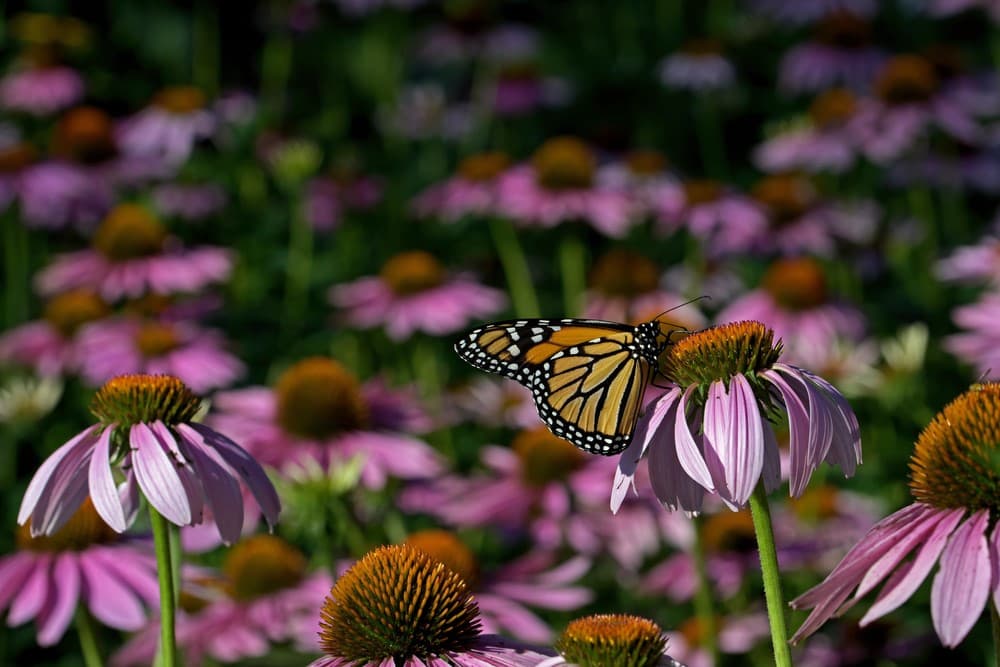The Secret to a Thriving Garden: Native Plants

Welcome to the wonderful world of gardening, where creativity meets nature’s beauty. Whether you’re a seasoned green thumb or just starting out, one thing is certain: the secret to a thriving garden lies in the power of native plants. These local gems not only enhance the aesthetic appeal of your outdoor space but also contribute to a healthier ecosystem.
In this article, we’ll explore why native plants are the ultimate game-changers for your garden. So, grab your gardening gloves, let’s dive in and unlock the secrets of a successful garden with native plants!
Understanding Native Plants
Native plants, also known as indigenous or endemic plants, have naturally evolved and adapted to a specific region or ecosystem over thousands of years. They form an integral part of the local environment, supporting the delicate balance of the ecosystem and providing essential resources for native wildlife.
These plants have developed unique mechanisms to withstand local climate conditions, resist pests and diseases, and thrive without excessive human intervention. Here are some of the main benefits of planting native plants in your garden.
1. Biodiversity and Ecosystem Support
One of the most significant advantages of incorporating native plants in your garden is their ability to support biodiversity. Native plants attract and sustain a diverse range of insects, birds, and other wildlife, including pollinators like bees and butterflies. By creating a habitat with native plants, you’re essentially inviting a plethora of beneficial creatures into your garden, contributing to the overall health and resilience of the ecosystem.
2. Low Maintenance and Water Conservation
Native plants are naturally adapted to the local climate and soil conditions, requiring minimal maintenance once established. Unlike non-native species, they have evolved to thrive in their specific region, reducing the need for excessive watering, fertilization, and pesticide use. This not only saves you time and effort but also promotes water conservation and reduces the environmental impact of gardening.
3. Pest and Disease Resistance
Native plants have developed natural defenses against local pests and diseases, making them more resilient and less prone to infestations. Their resistance can significantly reduce the need for chemical pesticides, creating a healthier environment for both your garden and the surrounding ecosystem.
Native Plants and Climate Change
As our planet faces the challenges of climate change, native plants play a crucial role in mitigating its effects. They have adapted to local climate patterns over time and are better equipped to withstand extreme weather conditions, such as droughts and heat waves.
By incorporating native plants into your garden, you’re creating a beautiful landscape — and contributing to the fight against climate change by promoting biodiversity and preserving local ecosystems.
Designing with Native Plants
When you decide to plant your native plants, don’t just dig a hole and hope for the best. Here are some tips to make your garden the lush, wildlife-attracting oasis you’ve been dreaming of.
1. Research and Planning
Before diving into your garden project, take some time to research and identify the native plant species indigenous to your region. Consider factors such as soil type, sunlight exposure, and moisture levels. Consulting local gardening experts, nurseries, or botanical gardens can provide valuable guidance in selecting the right plants for your specific area.
2. Native Plant Communities
When designing your garden, aim to recreate the natural habitats found in your region. Native plants often grow together in specific communities or associations, and recreating these communities in your garden can enhance their overall health and ecological function. By choosing a diverse array of species that naturally coexist, you’ll create a visually appealing and ecologically vibrant garden.
3. Blending Natives and Ornamentals
You can also incorporate non-native ornamental plants into your garden design, but it’s essential to strike a balance. By blending native plants with well-chosen ornamentals, you can create a visually stunning landscape while still prioritizing the benefits native plants bring to the ecosystem.
Resources and Further Reading: Garden for Wildlife
If you’re interested in exploring the world of native plants and their benefits, one organization that stands out is Garden for Wildlife. They provide valuable resources and information to help you create a thriving garden that supports local ecosystems. Here are some key resources they offer:
1. Native Plants Database
Garden for Wildlife offers a comprehensive native plants database that allows you to search for species suitable for your region. This database provides detailed information on each plant, including their benefits for wildlife and specific growing requirements.
2. Wildlife Habitat Certification
Garden for Wildlife, along with the National Wildlife Federation, offers a certification program that recognizes gardens and landscapes that provide essential habitats for wildlife. By following their guidelines and creating a habitat-friendly garden, you can receive official certification and join a community of like-minded individuals passionate about wildlife conservation.
3. Educational Materials
Garden for Wildlife provides educational materials, such as guides and articles, to help you learn more about gardening with native plants and supporting wildlife. These resources cover a range of topics, including plant selection, wildlife habitat creation, and sustainable gardening practices.
To access these resources and learn more about Garden for Wildlife, visit their official website at www.gardenforwildlife.com. They are an excellent starting point for anyone looking to dive deeper into the world of native plants and create a garden that nurtures local ecosystems.
Start Planning Your Wildlife Haven
Gardening with native plants is a win-win situation. By embracing these local beauties, you can create a vibrant and sustainable garden while contributing to the preservation of your region’s unique ecosystem. Native plants offer a range of benefits, from supporting biodiversity and conserving water to mitigating climate change and reducing maintenance efforts. So, let’s celebrate the diversity of nature and unlock the secrets to a thriving garden by going native!
Remember, gardening is an adventure, and the journey begins with planting the seeds of change — native plants — for a better, greener world. Happy gardening!
